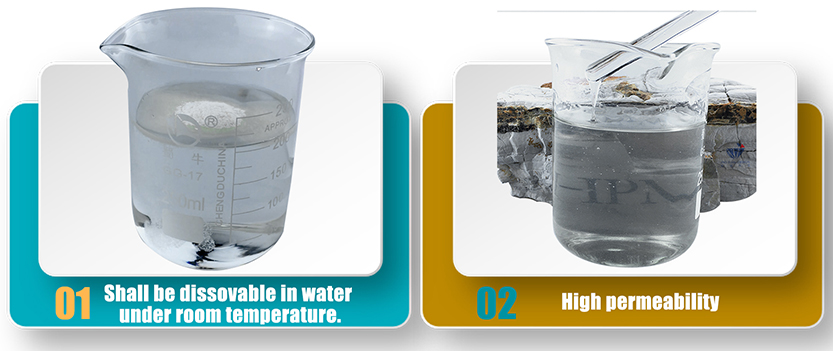
Dec . 06, 2024 09:10 Back to list
Applications and Benefits of Hydroxypropyl Methyl Cellulose in Various Industries
Understanding Hydroxypropyl Methyl Cellulose Properties, Applications, and Benefits
Hydroxypropyl methyl cellulose (HPMC) is a versatile, non-ionic, and water-soluble polymer derived from cellulose, the most abundant organic polymer on Earth. It is a chemically modified form of cellulose that possesses beneficial properties, making it an essential ingredient in various industries, including pharmaceuticals, food, cosmetics, and construction. This article delves into the properties of HPMC, its various applications, and the benefits it offers.
Properties of Hydroxypropyl Methyl Cellulose
HPMC exhibits a range of characteristics that enhance its functionality in different applications. One of its primary properties is solubility; HPMC can dissolve in cold water to form a clear, viscous solution, which is crucial for many applications where transparency and a smooth texture are desired. Its gel-forming characteristics allow it to create stable emulsions, acting as a thickener and stabilizer in many formulations.
Another noteworthy property is its thermal stability. HPMC can withstand higher temperatures compared to traditional cellulose derivatives, making it suitable for use in high-temperature processes. Additionally, it has excellent film-forming abilities, allowing it to create thin, flexible films that can provide moisture retention and controlled release of active ingredients.
Applications of Hydroxypropyl Methyl Cellulose
1. Pharmaceuticals In the pharmaceutical industry, HPMC plays a pivotal role as a binder, thickener, and controlled-release agent in tablet formulations. Its ability to form gels at physiological temperatures is utilized in sustained-release formulations, allowing for the gradual release of active pharmaceutical ingredients over time. HPMC is also used in eye drops and gel-forming ointments due to its compatibility with sensitive tissues and optimal viscosity.
2. Food Industry HPMC is employed in the food sector as a food additive, primarily as a thickener, emulsifier, and stabilizer. It helps improve the texture and mouthfeel of various products, such as sauces, dressings, and dairy products. It is particularly valued in gluten-free and low-fat formulations, where it provides structure and moisture retention. Moreover, HPMC is often utilized in vegan and vegetarian products as a substitute for animal-derived ingredients, enhancing food quality without compromising dietary preferences.
hydroxypropyl methyl cellulose

3. Cosmetics and Personal Care In cosmetics and personal care products, HPMC acts as a thickening agent, stabilizer, and film former. It enhances the texture and sensory experience of lotions, creams, and gels. Additionally, HPMC is used in hair care formulations to improve hair conditions by providing shine, reducing frizz, and enhancing manageability.
4. Construction HPMC is also utilized in construction materials, particularly in cement-based products. It improves the workability and adhesion of mortars and plasters, leading to better finish and durability. The water-retention properties of HPMC ensure that applied materials remain workable for longer periods, allowing for more effective mixing and application.
Benefits of Hydroxypropyl Methyl Cellulose
The use of HPMC offers numerous benefits across different industries. One significant advantage is its compatibility with a wide range of formulations, enhancing product performance without compromising safety. HPMC is non-toxic, biodegradable, and derived from renewable resources, making it an environmentally friendly choice.
Another key benefit is its ability to improve product stability and shelf life. By acting as a thickener and stabilizer, HPMC helps prevent separation and sedimentation in suspensions and emulsions, ensuring consistent product quality over time.
Moreover, HPMC's functional versatility means that manufacturers can tailor their formulations to meet specific needs and standards, resulting in a higher-quality end product that can cater to diverse consumer demands.
Conclusion
Hydroxypropyl methyl cellulose stands out as a multifunctional polymer that has become indispensable in various industries due to its unique properties and wide-ranging applications. Its ability to enhance product performance, stability, and user experience makes it a preferred ingredient in pharmaceuticals, food, cosmetics, and construction materials. As industries continue to innovate and evolve, HPMC will undoubtedly play a significant role in meeting the challenges of modern formulation science while promoting sustainability.
-
Versatile Hpmc Uses in Different Industries
NewsJun.19,2025
-
Redispersible Powder's Role in Enhancing Durability of Construction Products
NewsJun.19,2025
-
Hydroxyethyl Cellulose Applications Driving Green Industrial Processes
NewsJun.19,2025
-
Exploring Different Redispersible Polymer Powder
NewsJun.19,2025
-
Choosing the Right Mortar Bonding Agent
NewsJun.19,2025
-
Applications and Significance of China Hpmc in Modern Industries
NewsJun.19,2025







